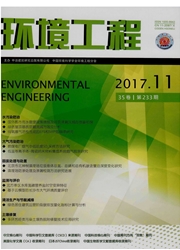

 中文摘要:
中文摘要:
以实验室序批式反应器(SBR)为强化生物除磷工艺(EBPR)载体,接种具有初步除磷功能的污泥后,以乙酸∶丙酸=1∶1(按各自折算的COD计)为混合碳源(以下简称混酸),厌氧初始pH 7.6±0.1,富集聚磷菌(PAO)。启动30 d后,EBPR反应器中为PAO和聚糖菌(GAO)的混合菌属,此时从反应器中取泥样进行批式试验,分别考察乙酸、丙酸及混酸对聚磷菌的富集和厌氧释磷的影响。结果表明:在EBPR启动期内,乙酸作为单一碳源时释磷量最大,但混酸碳源释磷效率最高,最有利于PAO富集;丙酸作为单一碳源时降解率最大而释磷量最小,不适合EBPR启动期的PAO富集。
 英文摘要:
英文摘要:
An enhanced biological phosphorus removal (EBPR) process was achieved by proposing a laboratorial scale sequencing batch reactor ( SBR). After inoculating surplus sludge with preliminary phosphorus removal function, the poly- phosphorus accumulating organisms(PAO) were enriched by adding mixed carbon sources consisted of acetic: propionie acid = 1:1 (counted by COD) , controlling anaerobic initial pH 7.6 =1: 0. 1. Mud samples used for batch tests were taken from the reactor when glucose accumulating organisms(GAO) and PAO coexisted in EBPR after running SBR for one month. The batch tests focused on PAO enrichment and anaerobic phosphate release when acetate,propionic acid and mixed acid was added as carbon sources respectively. The results showed that in the EBPR startup period,the highest soluble orthophosphate(SOP) was released when using acetate as a single carbon source whereas the most effective phosphorus releasing was achieved by applying hybrid carbon source, showing that the latter favors PAO mostly, propionie acid,however,was unsuitable for enriching PAO and anaerobic phosphorus release in starting-up EBPR when it used as a single carbon source because of its biggest degradation and the smallest phosphorus release.
 同期刊论文项目
同期刊论文项目
 同项目期刊论文
同项目期刊论文
 期刊信息
期刊信息
